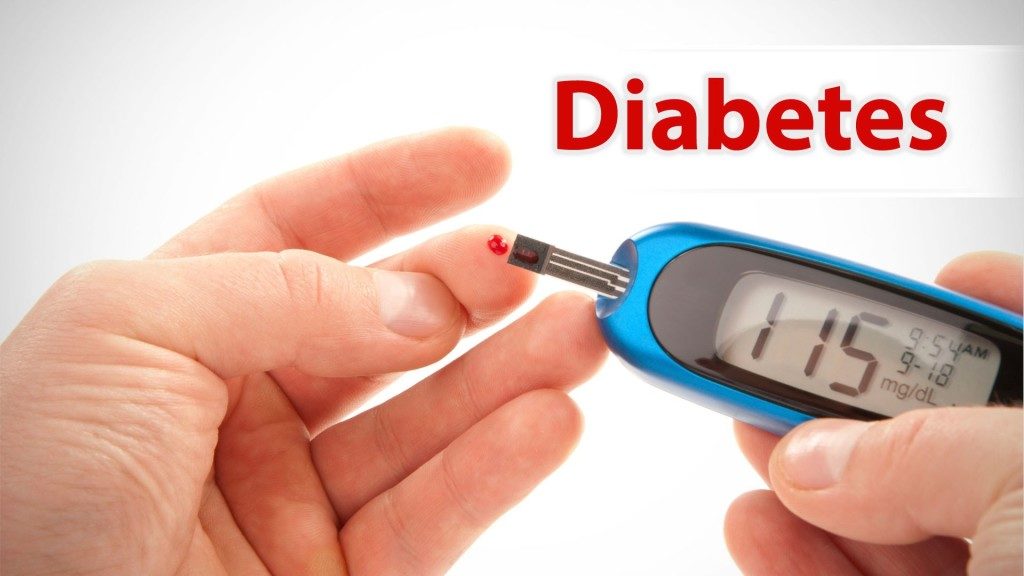What is diabetes?

What is diabetes?
Diabetes is a disease in which the body is unable to properly use and store glucose (a form of sugar). Glucose backs up in the bloodstream — causing one’s blood glucose (sometimes referred to as blood sugar) to rise too high.
There are two major types of diabetes.
In Type 1
Also called juvenile-onset or insulin-dependent diabetes, the body completely stops producing any insulin, a hormone that enables the body to use glucose found in foods for energy. People with type 1 diabetes must take daily insulin injections to survive. This form of diabetes usually develops in children or young adults, but can occur at any age.
Type 2 also called adult-onset or non insulin-dependent diabetes results when the body doesn’t produce enough insulin and/or is unable to use insulin properly (insulin resistance). This form of diabetes usually occurs in people who are over 40, overweight, and have a family history of diabetes, although today it is increasingly occurring in younger people, particularly adolescents.
How do people know if they have diabetes?
People with diabetes frequently experience certain symptoms. These include:
- being very thirsty
- frequent urination
- weight loss
- increased hunger
- blurry vision
- irritability
- tingling or numbness in the hands or feet
- frequent skin, bladder or gum infections
- wounds that don’t heal
- extreme unexplained fatigue
In Some Cases, There Are No Symptoms — This Happens At Times With Type 2 Diabetes. In this case, people can live for months, even years without knowing they have the disease. This form of diabetes comes on so gradually so that symptoms may not be recognized
What other problems can diabetes cause?
Use your medications and monitor your blood glucose regularly to keep your blood glucose in as normal a range as possible as much of the time as possible.
Why is this so important?
Because poorly managed diabetes can lead to a host of long-term complications — among these are heart attacks, strokes, blindness, kidney failure, and blood vessel disease that may require an Amputation, nerve damage, and impotence in men.
Indian Diet Plan for Diabetics
| Early | Options |
|---|---|
| Morning | • Warm water with lemon juice. • Cucumber and lemon detox water. • Green tea without sugar or artificial sweeteners. You can have two digestive biscuits with the tea. |
| Breakfast | • One to two cups of porridge. • Two pieces of brown bread with boiled egg whites. • Two small paranthas (without ghee or butter) with 1 cup curd. • Wheat flakes with one cup of milk. • Tip: Eat at least one fruit (apple, banana, guava, orange, etc.) . |
| Pre-Lunch | • Cucumber, tomato, carrot, and beetroot salad. Add a dash of lime, and garnish with coriander leaves and a few mint leaves. • Boil the veggies, if you cannot eat them raw. Add a pinch of salt, pepper, and a little butter. |
| Lunch | • Two medium-sized chapatis with either rajma, chole, or vegetable curry. Use carrot, cauliflower, capsicum, brinjal, okra, etc.for veg curry. • A fillet of baked fish. |
| Evening Snacks | Green tea without sugar or artificial sweeteners. You can have one small bowl of bhel puri or baked snacks. |
| Dinner | • Two medium-sized chapatis, any vegetable curry (any type of gourd, brinjal, capsicum, etc.) except root vegetables and one small bowl of curd. • Chicken stew, two small chapatis, and one small bowl of curd. |
| Before Bed | One glass of warm milk with a pinch of raw ground turmeric. |
This article contains general advice only and is not a substitute for medical advice. Always seek a professional health care opinion
